
FAMILIES A-C: BOWMAN ~ George W. Bowman
George W. Bowman (1836-____) appears to have been the earliest Bowman to live in Darrtown and/or vicinity, according to research conducted in 2012.
George W. Bowman married Lucy Yeakle and they had six children: LIzella, Franklin P., Mary C., Cora, Sarah J., and George W.
George W. Bowman named his youngest son, George W. Bowman. The next two images, from the 1880 and 1910 U.S. Federal Census, are provided to help distinguish between George W. Bowman (born 1836) and George W. Bowman (born 1872).
GEORGE W. BOWMAN, THE FATHER
The following 1880 census report provides
information about George W. Bowman, born in 1836.
GEORGE W. BOWMAN, THE SON
The following 1910 census report provides information about George W. Bowman, born in 1872.

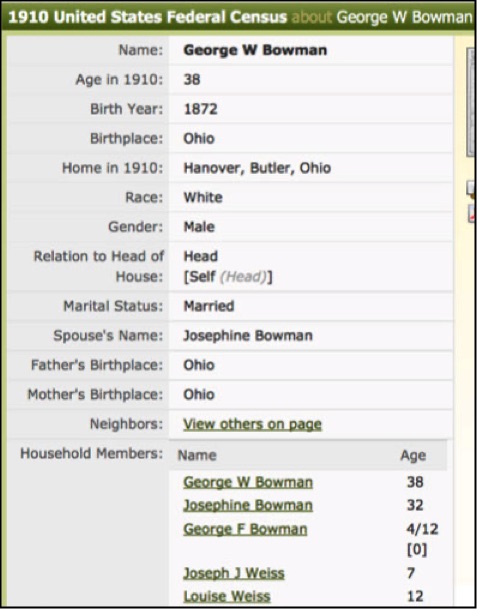
Kay Weiss, a descendant of the Bowman-Weiss family, provided information regarding the Bowman family genealogy, via an exchange of email messages.
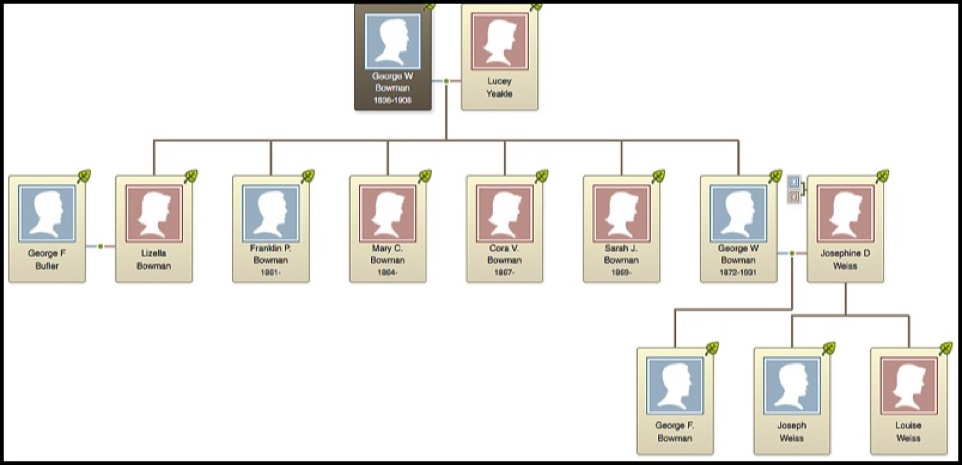
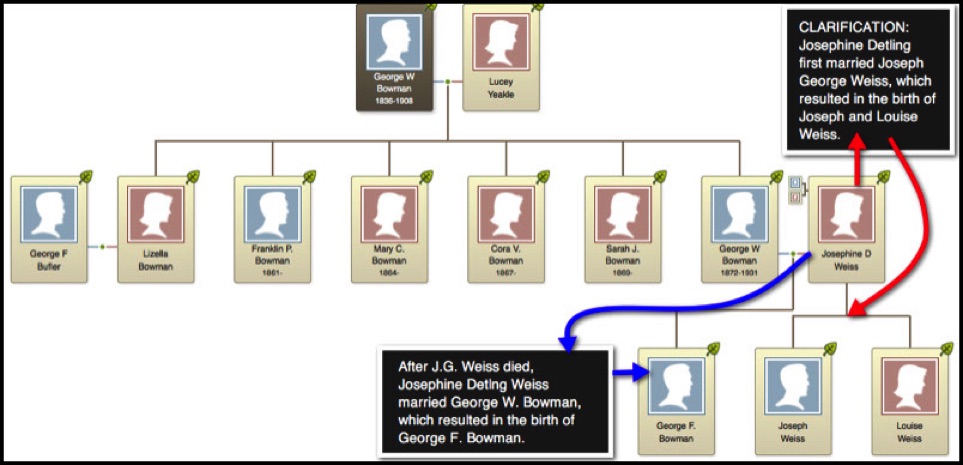
In the summer of 2012, Kay Weiss contributed the image at the right and provided the following commentary.
(Left to right)
BACK ROW: Henry Bindheimer (step-dad to Josephina Bowman), Charley Davis, Joe Dunwoody, George Bowman (1872-1931), "Mom" (Josephina Detling Weiss Bowman), Frank Bufler;
MIDDLE ROW: Kate Davis, Louise Weiss Dunwoody, Addie Bufler; FRONT ROW: Robert "Bob" Dunwoody, Walter "Pete" Dunwoody.
(Based on the boys' looks, I would say this photo was taken around 1922.)"
Webmaster Note: There were several Frank Buflers in the history of Darrtown. The Frank Bufler, who appears in this photo (back row, far right), was George Frank Bufler, who married Addie (Baecker) Bufler, who appears at the far right of the second row. See more Bufler info at: Families - Bufler.
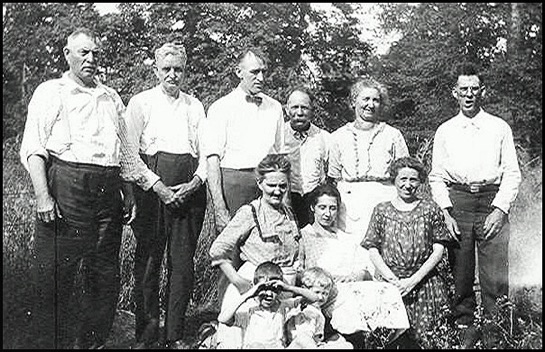

Bowman - Weiss - Dunwoody Family Photo
The following Bowman-Weiss family tree was constructed by combining the U.S. federal census information (see images above) with family history provided by Kay Weiss, in her email messages.
1926 - George Bowman injured in corn binder accident
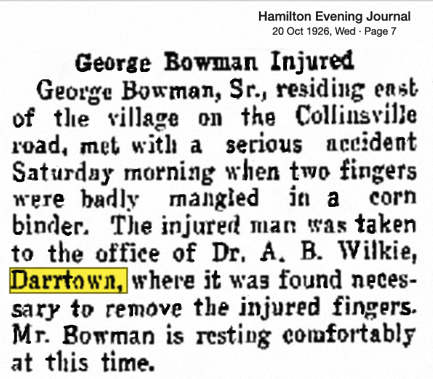
Presently (February 2023), the location of the Bowman farm is unknown. The reference to "the Collinsville road" likely means St. Route 73 - or the Oxford-Trenton Road, as it is also known.
A corn binder was a farm implement, likely pulled by a team of horses, in the 1920s, that cut standing corn and bundled a collection of corn stalks with twine string. The bundle was dropped onto the ground, which workers gathered and placed in a standing Indian teepee-like arrangement - known as a corn shock.
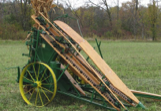
Click to see a
